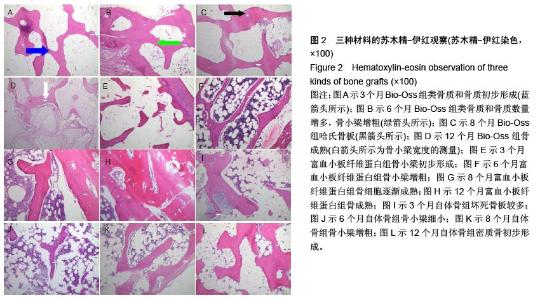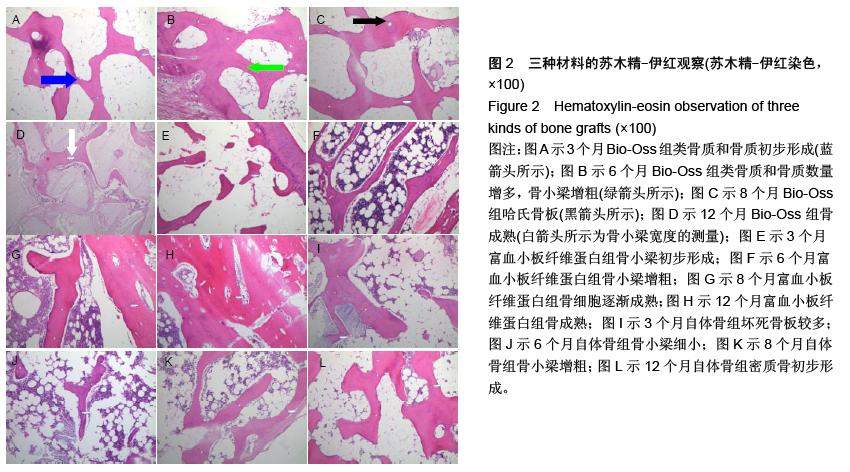| [1] Geurs N,Ntounis A,Vassilopoulos P,et al.Using growth factors in human extraction sockets:a histologic and histomorphometric evaluation of short-term healing. Int J Oral Maxillofac Implants. 2014;29(2):485-496.[2] Mogharehabed A,Birang R,Torabinia N,et al.Socket preservation using demineralized freezed dried bone allograft with and without plasma rich in growth factor: A canine study.Dent Res J (Isfahan).2014;11(4): 460-468.[3] 杨晓峰.不同材料不同时期引导的新生诱导骨的生物力学性能研究[D].泸州医学院, 2013.[4] 许方方,刘斌.富血小板纤维蛋白的研究及在组织修复中的应用[J].口腔医学,2015,35(8):691-693.[5] 孙亮.新方法制备富血小板凝胶对兔颅骨骨缺损的成骨效果[D].泸州医学院,2012.[6] 肖琼,董露,陈红亮,等.富血小板纤维蛋白新生诱导骨的研究进展[J].西南国防医药,2014,24(12):1402-1404.[7] 高洁,王明国,杨帅,等.不同生长因子对脂肪干细胞生物学行为的影响[J].中国组织工程研究,2015,19(19): 3010-3016.[8] 赵征,刘洪臣,鄂玲玲,等.不同生长因子对大鼠牙乳头细胞生物学特性的影响[J].口腔颌面修复学杂志,2010,11(3): 129-134.[9] Ji B,Sheng L,Chen G, et al.The combination use of platelet-rich fibrin and treated dentin matrix for tooth root regeneration by cell homing.Tissue Eng Part A.2015; 21(1-2):26-34.[10] 陈少龙,赵良功,滕元君,等.周期性和持续性流体剪切力对成骨细胞OPG、RANKL蛋白表达的影响[J].中国医学物理学杂志, 2015,32(1):120-123.[11] 聂然,杨刚,裴婷婷.骨替代材料在口腔种植骨缺损中的应用研究进展[J].延边大学医学学报,2015,38(2):154-156.[12] Simonpieri A, Choukroun J, Del CM, et al. Simultaneous sinus-lift and implantation using microthreaded implants and leukocyte- and platelet-rich fibrin as sole grafting material: a six-year experience.Implant Dent.2011;20(1):2-12.[13] Dohan E D. How to optimize the preparation of leukocyte- and platelet-rich fibrin (L-PRF, Choukroun's technique) clots and membranes: introducing the PRF Box. Oral Surg Oral Med Oral Pathol Oral Radiol Endod. 2010;110(3):275-278, 278-280.[14] 李雅巍,孙晓梅,滕利,等.牙齿种植骨量不足的相关研究进展[J].组织工程与重建外科杂志,2015,11(1):50-54.[15] 张文丽,李淑慧,陈诚.PRF复合自体骨髓间充质干细胞修复兔牙槽骨缺损的研究[J].口腔医学研究,2015,31(4):336-339.[16] 韩操,马宁,李忠义,等.自体骨髓间充质干细胞载体复合物修复骨缺损的组织学观察[J].中国组织工程研究, 2015, 19(6):891-897.[17] Dohan DM, Choukroun J, Diss A, et al. Platelet-rich fibrin (PRF): a second-generation platelet concentrate. Part I: technological concepts and evolution. Oral Surg Oral Med Oral Pathol Oral Radiol Endod.2006;101(3):e37-e44.[18] 张迎娣,阮征,张劲娥,等.富血小板纤维蛋白对人牙槽骨成骨细胞增殖和分化的影响[J].口腔颌面外科杂志,2015,25(4):258-265.[19] He L, Lin Y, Hu X, et al. A comparative study of platelet-rich fibrin (PRF) and platelet-rich plasma (PRP) on the effect of proliferation and differentiation of rat osteoblasts in vitro. Oral Surg Oral Med Oral Pathol Oral Radiol Endod. 2009;108(5):707-713.[20] 张萍,李帅,刘志东.牙周病患者牙周基础治疗前后龈沟液中RANKL和OPG变化[J].现代口腔医学杂志,2015,9(3): 149-152.[21] 邓飞龙,曾融生,罗智斌,等.上颌窦提升术中单独应用牛无机骨基质(Bio-Oss)或人冻干脱钙骨的临床评价[J].中国口腔种植学杂志, 2004,9(3):112-115.[22] 黄金龙,夏虹,李丽华,等.异种骨与成骨细胞体外生物相容性研究[J].中国矫形外科杂志,2014,22(2):158-162.[23] 沈敏华,束蓉.基质金属蛋白酶与牙周病关系的研究进展[J].牙体牙髓牙周病学杂志, 2007,17(1):44-47.[24] 郭蕊欣,李金源.基质金属蛋白酶在牙周病发展中的作用[J].军医进修学院学报,2010,31(5):519-520.[25] 谭鹏.激素性股骨头坏死的骨组织TGF-β1、MMP-2、Run-X2及BGP的表达[D].广州中医药大学,2014.[26] 娄鸣,李晓红,饶国洲. BMP-2,BGP mRNA表达量及ALP活性的变化对大鼠骨髓间充质干细胞体外诱导成骨细胞的影响[J].现代检验医学杂志, 2008,23(5):28-31.[27] 王昱翔,张宏其,郭超峰,等.雌激素受体β基因沉默对成骨样MG63细胞骨保护素和RANKL表达的影响[J].中国组织工程研究, 2013,17(41):7188-7198.[28] 胡其娴,马晓文,胡小磊,等.小鼠OC-STAMP蛋白表达、纯化、抗体制备及鉴定[J]. 中华临床医师杂志:电子版, 2013,7(8):3412-3415.[29] 冯仲林,刘双信,史伟,等.嘌呤霉素氨基核苷肾病肾脏中RANK-RANKL的表达[J].南方医科大学学报, 2014, 34(1):65-69.[30] 邱建忠.原发性骨质疏松症120例临床分析[D].广州中医药大学, 2008.[31] 李三华,刘坤祥,莫宁萍,等.RT-PCR法检测杜仲总黄酮对大鼠成骨细胞骨钙素表达的影响[J].遵义医学院学报, 2011, 34(3):223-225.[32] 李增健,杨鸣良,王玉新.金刚石涂膜种植材料骨界面区骨钙素mRNA表达[J].临床口腔医学杂志,2006,22(1):17-19.[33] Fickl S, Zuhr O, Wachtel H, et al. Hard tissue alterations after socket preservation: an experimental study in the beagle dog. Clin Oral Implants Res. 2008; 19(11):1111-1118.[34] Vignoletti F, Discepoli N, Muller A, et al. Bone modelling at fresh extraction sockets: immediate implant placement versus spontaneous healing: an experimental study in the beagle dog. J Clin Periodontol.2012;39(1):91-97.[35] Sam G, Vadakkekuttical RJ, Amol NV. In vitro evaluation of mechanical properties of platelet-rich fibrin membrane and scanning electron microscopic examination of its surface characteristics. J Indian Soc Periodontol. 2015; 19(1):32-36.[36] 陈红亮,赵承初,赵峰,等.国产异种脱细胞真皮基质在引导骨再生术治疗种植义齿受植区骨缺损中的成骨效果[J].国际口腔医学杂志,2013,40(1):33-36. |





